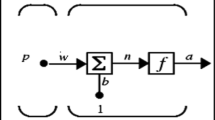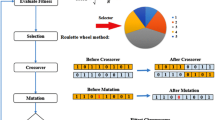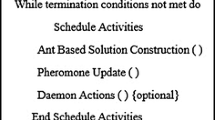Abstract
In blasting operations, a huge amount of energy is normally wasted to generate some unwanted issues in the surrounding zones, e.g., flyrock and oversize boulders. In this study, to solve these environmental issues of blasting, two phases of prediction and optimization were considered and applied. In the phase of prediction, the performance of two soft computing models, i.e., decision tree (DT) and artificial neural network (ANN), was examined to estimate the flyrock and oversize boulders. To do that, 172 blasting operations were monitored in the Chah Soleiman limestone mine, Iran, and the most effective parameters on flyrock and oversize boulder were collected. The modelling results indicated that the ANN model is more accurate compared to the DT technique in predicting both flyrock and oversize boulders. A three layer ANN model with eight input neurons, nine neurons in a single hidden layer, and two neurons in the output layer, was proposed in this study. Then, the proposed ANN model was used as an objective function in the optimization phase, which was implemented through the use of the imperialist competitive algorithm (ICA). In this phase, many ICA models were constructed based on different parametric studies, and the optimal ICA parameters were obtained to get the best performance from this algorithm. Further, based on the best ICA model, the optimal blasting pattern parameters were achieved, and through them, the amounts of flyrock and oversize boulders were minimized. Maximum reductions of 34.21 and 91.98% were obtained for the results of flyrock and oversize boulders, respectively, which indicate a high applicability level of the ICA in minimizing blasting environmental issues.













Similar content being viewed by others
References
Armaghani DJ, Asteris PG (2020) A comparative study of ANN and ANFIS models for the prediction of cement-based mortar materials compressive strength. Neural Comput Appl. https://doi.org/10.1007/s00521-020-05244-4
Armaghani DJ, Hajihassani M, Mohamad ET et al (2014) Blasting-induced flyrock and ground vibration prediction through an expert artificial neural network based on particle swarm optimization. Arab J Geosci 7:5383–5396
Armaghani D, Mohamad E, Hajihassani M et al (2016a) Evaluation and prediction of flyrock resulting from blasting operations using empirical and computational methods. Eng Comput 32:109–121. https://doi.org/10.1007/S00366-015-0402-5
Armaghani DJ, Mahdiyar A, Hasanipanah M et al (2016b) Risk assessment and prediction of flyrock distance by combined multiple regression analysis and Monte Carlo simulation of quarry blasting. Rock Mech Rock Eng 49:1–11. https://doi.org/10.1007/s00603-016-1015-z
Armaghani DJ, Mohamad ET, Narayanasamy MS et al (2017) Development of hybrid intelligent models for predicting TBM penetration rate in hard rock condition. Tunn Undergr Sp Technol 63:29–43. https://doi.org/10.1016/j.tust.2016.12.009
Armaghani DJ, Hasanipanah M, Amnieh HB, Mohamad ET (2018) Feasibility of ICA in approximating ground vibration resulting from mine blasting. Neural Comput Appl 29:457–465
Armaghani DJ, Asteris PG, Fatemi SA et al (2020a) On the use of neuro-swarm system to forecast the pile settlement. Appl Sci 10:1904
Armaghani DJ, Koopialipoor M, Bahri M et al (2020b) A SVR-GWO technique to minimize flyrock distance resulting from blasting. Bull Eng Geol Environ. https://doi.org/10.1007/s10064-020-01834-7
Armaghani DJ, Harandizadeh H, Momeni E (2021a) Load carrying capacity assessment of thin-walled foundations: an ANFIS–PNN model optimized by genetic algorithm. Eng Comput. https://doi.org/10.1007/s00366-021-01380-0
Armaghani DJ, Harandizadeh H, Momeni E et al (2021b) An optimized system of GMDH-ANFIS predictive model by ICA for estimating pile bearing capacity. Artif Intell Rev. https://doi.org/10.1007/s10462-021-10065-5
Asl PF, Monjezi M, Hamidi JK, Armaghani DJ (2018) Optimization of flyrock and rock fragmentation in the Tajareh limestone mine using metaheuristics method of firefly algorithm. Eng Comput. https://doi.org/10.1007/s00366-017-0535-9
Asteris PG, Mamou A, Hajihassani M, Hasanipanah M, Koopialipoor M, Le T, Kardani N, Armaghani DJ (2021) Soft computing based closed form equations correlating L and N-type Schmidt hammer rebound numbers of rocks. Transport Geotech 29:100588
Asteris PG, Lourenço PB, Roussis PC et al (2022) Revealing the nature of metakaolin-based concrete materials using artificial intelligence techniques. Constr Build Mater 322:126500
Atashpaz-Gargari E, Lucas C (2007) Imperialist competitive algorithm: an algorithm for optimization inspired by imperialistic competition. In: IEEE Congress on Evolutionary computation, 2007. CEC 2007. IEEE, pp 4661–4667
Barkhordari M, Armaghani D, Asteris P (2022) Structural damage identification using ensemble deep convolutional neural network models. Comput Model Eng Sci. https://doi.org/10.32604/cmes.2022.020840
Bhandari S (1997) Engineering rock blasting operations. A A Balkema, Rotterdam, p 388
Bui X-N, Jaroonpattanapong P, Nguyen H et al (2019) A novel hybrid model for predicting blast-induced ground vibration Based on k-nearest neighbors and particle Swarm optimization. Sci Rep 9:1–14
Chakraborty AK, Raina AK, Ramulu M et al (2004) Parametric study to develop guidelines for blast fragmentation improvement in jointed and massive formations. Eng Geol 73:105–116
Chung SH, Katsabanis PD (2000) Fragmentation prediction using improved engineering formulae. Fragblast 4:198–207
Cunningham C (1983) The Kuz-Ram Model for production of fragmentation from blasting. In: Proc. 1st Symp. on Rock Fragmentation by Blasting, Lulea
Dhekne PY, Pradhan M, Jade KR, Mishra R (2017) Boulder prediction in rock blasting using artificial neural network. ARPN J Eng Appl Sci 12:47–61
Dreyfus G (2005) Neural networks: methodology and applications. Springer, Berlin
Esmaeili M, Salimi A, Drebenstedt C et al (2015) Application of PCA, SVR, and ANFIS for modeling of rock fragmentation. Arab J Geosci 8:6881–6893
Faramarzi F, Mansouri H, Ebrahimi Farsangi MA (2013) A rock engineering systems based model to predict rock fragmentation by blasting. Int J Rock Mech Min Sci. https://doi.org/10.1016/j.ijrmms.2012.12.045
Ghiasi M, Askarnejad N, Dindarloo SR, Shamsoddini H (2016) Prediction of blast boulders in open pit mines via multiple regression and artificial neural networks. Int J Min Sci Technol 26:183–186
Guo H, Zhou J, Koopialipoor M et al (2019) Deep neural network and whale optimization algorithm to assess flyrock induced by blasting. Eng Comput. https://doi.org/10.1007/s00366-019-00816-y
Guo H, Nguyen H, Bui X-N, Armaghani DJ (2021) A new technique to predict fly-rock in bench blasting based on an ensemble of support vector regression and GLMNET. Eng Comput 37:421–435. https://doi.org/10.1007/s00366-019-00833-x
Hajihassani M, Jahed Armaghani D, Marto A, Tonnizam Mohamad E (2014a) Ground vibration prediction in quarry blasting through an artificial neural network optimized by imperialist competitive algorithm. Bull Eng Geol Environ 74:873–886. https://doi.org/10.1007/s10064-014-0657-x
Hajihassani M, Jahed Armaghani D, Sohaei H et al (2014b) Prediction of airblast-overpressure induced by blasting using a hybrid artificial neural network and particle swarm optimization. Appl Acoust 80:57–67. https://doi.org/10.1016/j.apacoust.2014.01.005
Han H, Armaghani DJ, Tarinejad R et al (2020) Random Forest and Bayesian network techniques for probabilistic prediction of flyrock induced by blasting in quarry sites. Nat Resour Res 29:655–667. https://doi.org/10.1007/s11053-019-09611-
Harandizadeh H, Armaghani DJ, Mohamad ET (2020) Development of fuzzy-GMDH model optimized by GSA to predict rock tensile strength based on experimental datasets. Neural Comput Appl 32:14047–14067. https://doi.org/10.1007/s00521-020-04803-z
Hasanipanah M, Monjezi M, Shahnazar A, Armaghani DJ, Farazmand A (2015) Feasibility of indirect determination of blast induced ground vibration based on support vector machine. Measurement 75:289–297. https://doi.org/10.1016/j.measurement.2015.07.019
Hasanipanah M, Jahed Armaghani D, Monjezi M, Shams S (2016) Risk assessment and prediction of rock fragmentation produced by blasting operation: a rock engineering system. Environ Earth Sci. https://doi.org/10.1007/s12665-016-5503-y
Hasanipanah M, Faradonbeh RS, Armaghani DJ et al (2017) Development of a precise model for prediction of blast-induced flyrock using regression tree technique. Environ Earth Sci 76:27
Hasanipanah M, Amnieh HB, Arab H, Zamzam MS (2018a) Feasibility of PSO–ANFIS model to estimate rock fragmentation produced by mine blasting. Neural Comput Appl. https://doi.org/10.1007/s00521-016-2746-1
Hasanipanah M, Jahed Armaghani D, Bakhshandeh Amnieh H et al (2018b) A risk-based technique to analyze flyrock results through rock engineering system. Geotech Geol Eng 36:2247–2260. https://doi.org/10.1007/s10706-018-0459-1
Hoek E, Brown ET (1997) Practical estimates of rock mass strength. Int J Rock Mech Min Sci 34:1165–1186
Hudaverdi T, Kulatilake P, Kuzu C (2011) Prediction of blast fragmentation using multivariate analysis procedures. Int J Numer Anal Methods Geomech 35:1318–1333
Jahed Armaghani D, Hajihassani M, Monjezi M et al (2015) Application of two intelligent systems in predicting environmental impacts of quarry blasting. Arab J Geosci. https://doi.org/10.1007/s12517-015-1908-2
Jahed Armaghani D, Mohd Amin MF, Yagiz S et al (2016) Prediction of the uniaxial compressive strength of sandstone using various modeling techniques. Int J Rock Mech Min Sci 85:174–186. https://doi.org/10.1016/j.ijrmms.2016.03.018
Jimeno CL, Jimeno EL, Carcedo FJA, De Ramiro Y V (1995) Drilling and blasting of rocks, geomining technological institute of Spain. Rotterdam, Netherlands AA Balkema
Karami A, Afiuni-Zadeh S (2013) Sizing of rock fragmentation modeling due to bench blasting using adaptive neuro-fuzzy inference system (ANFIS). Int J Min Sci Technol 23:809–813
Kazakov NN, Shlyapin AV (2012) Definition of quality of materials fragmented by blast with use of the computer program. Taylor and Francis, London
Khandelwal M, Monjezi M (2013) Prediction of backbreak in open-pit blasting operations using the machine learning method. Rock Mech Rock Eng 46:389–396
Khandelwal M, Singh TN (2009) Prediction of blast-induced ground vibration using artificial neural network. Int J Rock Mech Min Sci 46:1214–1222
Khandelwal M, Armaghani DJ, Faradonbeh RS et al (2017) Classification and regression tree technique in estimating peak particle velocity caused by blasting. Eng Comput 33:45–53
Koopialipoor M, Fallah A, Armaghani DJ et al (2018) Three hybrid intelligent models in estimating flyrock distance resulting from blasting. Eng Comput. https://doi.org/10.1007/s00366-018-0596-4
Koulli S, Rustan PA (1993) Computerized design and result prediction of bench blasting. In: International symposium on rock fragmentation by blasting, pp 263–271
Kulatilake P, Qiong W, Hudaverdi T, Kuzu C (2010) Mean particle size prediction in rock blast fragmentation using neural networks. Eng Geol 114:298–311
Kumar U (1995) Study and analysis of problems and disturbances caused by oversize boulders in a mine production system: a case study. Mine Plan Equip Sel 1995:121
Kuznetsov VM (1973) The mean diameter of the fragments formed by blasting rock. Sov Min 9:144–148
Li C, Zhou J, Armaghani DJ, Li X (2021a) Stability analysis of underground mine hard rock pillars via combination of finite difference methods, neural networks, and Monte Carlo simulation techniques. Undergr Sp 6:379–395
Li D, Koopialipoor M, Armaghani DJ (2021b) A combination of fuzzy Delphi method and ANN-based models to investigate factors of flyrock induced by mine blasting. Nat Resour Res. https://doi.org/10.1007/s11053-020-09794-1
Liang M, Mohamad ET, Faradonbeh RS et al (2016) Rock strength assessment based on regression tree technique. Eng Comput 32:343–354. https://doi.org/10.1007/s00366-015-0429-7
Lundborg N, Persson A, Ladegaard-Pedersen A, Holmberg R (1975) Keeping the lid on flyrock in open-pit blasting. Eng Min J 176:95–100
Mahmood W, Mohammed AS, Asteris PG et al (2022) Modeling flexural and compressive strengths behaviour of cement-grouted sands modified with water reducer polymer. Appl Sci 12:1016
McKenzie CK (2009) Flyrock range and fragment size prediction. In: Proceedings of the 35th Annual Conference on Explosives and Blasting Technique. International Society of Explosives Engineers
Mohamad ET, Armaghani DJ, Motaghedi H (2013) The effect of geological structure and powder factor in flyrock accident, Masai, Johor, Malaysia. Electron J Geotech Eng 18:5561–5572
Monjezi M, Rezaei M, Varjani AY (2009) Prediction of rock fragmentation due to blasting in Gol-E-Gohar iron mine using fuzzy logic. Int J Rock Mech Min Sci 46:1273–1280
Monjezi M, Bahrami A, Varjani AY (2010) Simultaneous prediction of fragmentation and flyrock in blasting operation using artificial neural networks. Int J Rock Mech Min Sci 3:476–480
Murlidhar BR, Armaghani DJ, Mohamad ET, Changthan S (2018) Rock fragmentation prediction through a new hybrid model based on imperial competitive algorithm and neural network. Smart Constr Res 2:1–12
Murlidhar BR, Kumar D, Jahed Armaghani D et al (2020) A novel intelligent ELM-BBO technique for predicting distance of mine blasting-induced flyrock. Nat Resour Res. https://doi.org/10.1007/s11053-020-09676-6
Murlidhar BR, Nguyen H, Rostami J et al (2021) Prediction of flyrock distance induced by mine blasting using a novel Harris Hawks optimization-based multi-layer perceptron neural network. J Rock Mech Geotech Eng 13:1413–1427
Nguyen H, Bui X-N (2019) Predicting blast-induced air overpressure: a robust artificial intelligence system based on artificial neural networks and random forest. Nat Resour Res 28:893–907
Nguyen H, Choi Y, Bui X-N, Nguyen-Thoi T (2020) Predicting blast-induced ground vibration in open-pit mines using vibration sensors and support vector regression-based optimization algorithms. Sensors 20:132
Nguyen H, Bui X-N, Choi Y et al (2021) A novel combination of whale optimization algorithm and support vector machine with different kernel functions for prediction of blasting-induced fly-rock in Quarry Mines. Nat Resour Res 30:191–207. https://doi.org/10.1007/s11053-020-09710-7
Nie SL, Rustan A (1987) Techniques and procedures in analysing fragmentation after blasting by photographic method. In 2nd International Symposium on Rock Fragmentation by Blasting, Keystone, Colorado, pp. 102–113
Parsajoo M, Armaghani DJ, Mohammed AS et al (2021) Tensile strength prediction of rock material using non-destructive tests: a comparative intelligent study. Transp Geotech 31:100652. https://doi.org/10.1016/J.TRGEO.2021.100652
Raina AK, Murthy V, Soni AK (2014) Flyrock in bench blasting: a comprehensive review. Bull Eng Geol Environ 73:1199–1209
Rokach L, Maimon OZ (2008) Data mining with decision trees: theory and applications. World Scientific, Singapore
Sadeghi F, Monjezi M, Armaghani DJ (2019) Evaluation and optimization of prediction of toe that arises from mine blasting operation using various soft computing techniques. Nat Resour Res. https://doi.org/10.1007/s11053-019-09605-2
Sanchidrián JA, Ouchterlony F (2017) A distribution-free description of fragmentation by blasting based on dimensional analysis. Rock Mech Rock Eng 50:781–806
Shams S, Monjezi M, Majd VJ, Armaghani DJ (2015) Application of fuzzy inference system for prediction of rock fragmentation induced by blasting. Arab J Geosci 8:10819–10832
Sharma LK, Umrao RK, Singh R et al (2017) Geotechnical characterization of road cut hill slope forming unconsolidated geo-materials: a case study. Geotech Geol Eng 35:503–515
Simpson PK (1990) Artificial neural systems: foundations, paradigms, applications, and implementations. Pergamon, New York
Singh TN, Singh R, Singh B et al (2016) Investigations and stability analyses of Malin village landslide of Pune district, Maharashtra, India. Nat Hazards 81:2019–2030
Singh SP, Narendrula R (2009) Causes, implications and control of oversize during blasting. In: Proceedings of the 9th International Symposium on Rock Fragmentation by Blasting, pp 311–317
Yang H, Wang H, Zhou X (2016) Analysis on the rock–cutter interaction mechanism during the TBM tunneling process. Rock Mech Rock Eng 49:1073–1090
Yang H, Wang Z, Song K (2020) A new hybrid grey wolf optimizer-feature weighted-multiple kernel-support vector regression technique to predict TBM performance. Eng Comput. https://doi.org/10.1007/s00366-020-01217-2
Yang H, Song K, Zhou J (2022) Automated recognition model of geomechanical information based on operational data of tunneling boring machines. Rock Mech Rock Eng. https://doi.org/10.1007/s00603-021-02723-5
Ye J, Koopialipoor M, Zhou J et al (2021) A novel combination of tree-based modeling and Monte Carlo simulation for assessing risk levels of flyrock induced by mine blasting. Nat Resour Res 30:225–243. https://doi.org/10.1007/S11053-020-09730-3
Zhou J, Chen C, Wang M, Khandelwal M (2021a) Proposing a novel comprehensive evaluation model for the coal burst liability in underground coal mines considering uncertainty factors. Int J Min Sci Technol. https://doi.org/10.1016/j.ijmst.2021.07.011
Zhou J, Qiu Y, Khandelwal M et al (2021b) Developing a hybrid model of Jaya algorithm-based extreme gradient boosting machine to estimate blast-induced ground vibrations. Int J Rock Mech Min Sci 145:104856
Zhou J, Shen X, Qiu Y et al (2021c) Improving the efficiency of microseismic source locating using a heuristic algorithm-based virtual field optimization method. Geomech Geophys Geo-Energy Geo-Resour. https://doi.org/10.1007/s40948-021-00285-y
Acknowledgements
Authors of this study wish to express their appreciation to the Tarbiat Modares University for supporting this study and making it possible.
Funding
This research received no external funding.
Author information
Authors and Affiliations
Corresponding author
Ethics declarations
Conflict of interest
The authors declare that they have no conflict of interest.
Additional information
Publisher's Note
Springer Nature remains neutral with regard to jurisdictional claims in published maps and institutional affiliations.
Rights and permissions
About this article
Cite this article
Zangoei, A., Monjezi, M., Armaghani, D.J. et al. Prediction and optimization of flyrock and oversize boulder induced by mine blasting using artificial intelligence techniques. Environ Earth Sci 81, 359 (2022). https://doi.org/10.1007/s12665-022-10436-3
Received:
Accepted:
Published:
DOI: https://doi.org/10.1007/s12665-022-10436-3




